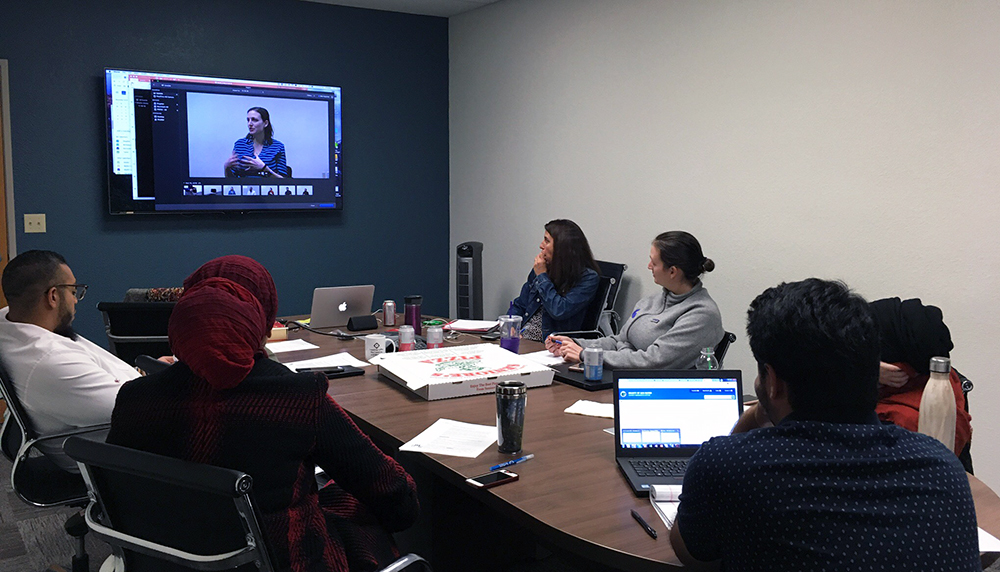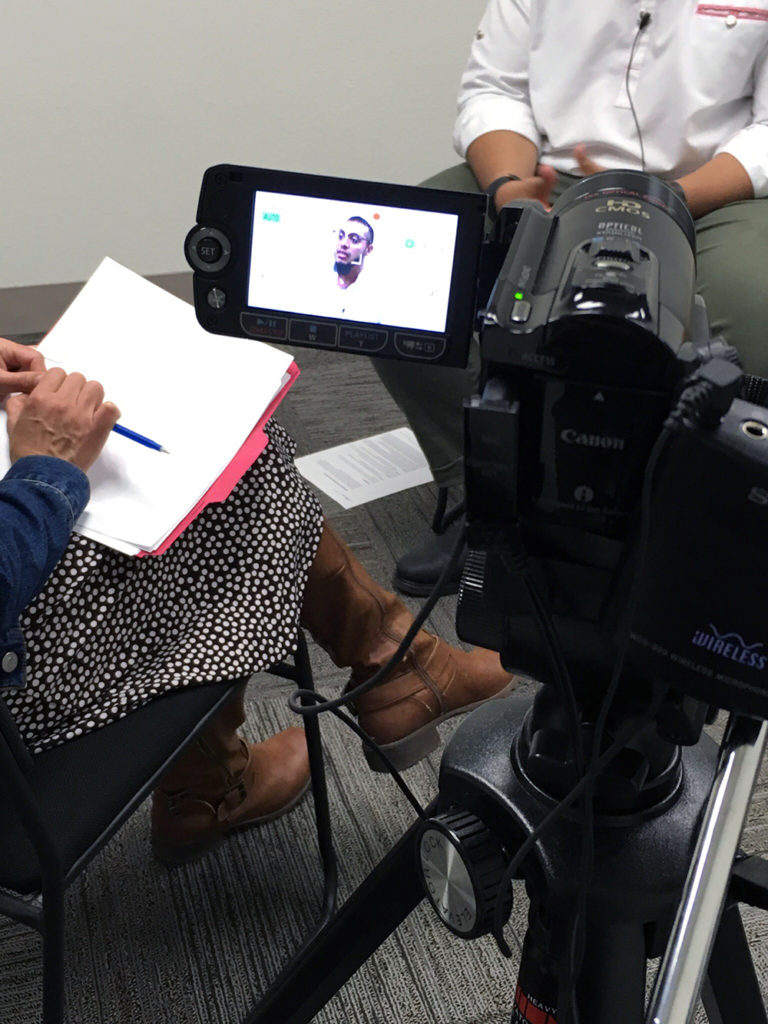Delivering effective messages: Lessons for advocates
by: Ingrid Daffner Krasnow and Shaddai Martinez Cuestas
posted on Monday, December 16, 2019
One of the biggest communication challenges advocates face is delivering messages effectively under pressure. We’ve all had that experience of preparing a rock-solid argument to make our case, only to have it fall apart when we get to that critical meeting or do an interview with the press.
The fear of saying things wrong is probably why one of the most frequent requests BMSG receives is for our spokesperson training. This training is designed to help advocates at any level, from novice to seasoned, learn tried-and-true techniques for high-stakes conversations. However, these techniques are most beneficial when advocates have clarified their overall strategy and crafted advocacy messages that align with it. With an opportunity for practice and expert feedback, the spokesperson training is one of the best ways to polish your message delivery.
The San Francisco Bay Area office of the Council on American-Islamic Relations (CAIR-SFBA), a grantee of The California Wellness Foundation, recently participated in a training to do just that. During the training, common challenges surfaced, as well as lessons that could benefit any group working to refine its spokesperson skills. This blog, the final in a three-part series, highlights those challenges and lessons and shows how they can be applied, using the case example from CAIR-SFBA.
The case of the Council on American-Islamic Relations
CAIR-SFBA, a regional office of a national organization whose mission is to “enhance understanding of Islam, protect civil rights, promote justice, and empower American Muslims,” reached out to BMSG for support preparing their team for media inquiries. CAIR-SFBA receives many calls from local media outlets seeking CAIR’s response to policies that directly affect Muslim Americans, such as the Muslim Ban, workplace discrimination, and student bullying, among others. While CAIR-SFBA has a strong voice around these issues through its executive director, the organization was eager to elevate the voices of staff members so they can also be effective spokespersons for the organization.

Through mock, on-camera interviews, we worked with the CAIR-SFBA team on strengthening their spokesperson skills. Here are a couple of excerpts from those interviews, along with insights to help advocates — even those with deep experience — improve their message delivery across a variety of issues.
Lesson 1: Shift the frame from portrait to landscape.
It’s common for news stories to focus on individual behavior, as “human interest” stories are often the ones that gain the most traction. To this end, many interviewers will ask questions about individual behavior. But we know that social change can only happen in the context of recognizing and changing the systems and structures that affect whole populations. When we’re talking to a reporter or policymaker about our systems change goals, we need to stay focused on the systems and structures that affect individuals. In BMSG’s terms, our goal as advocates is to widen the frame from the narrow portrait perspective into a broader landscape perspective that shows the larger systems that shape individuals’ lives but are often out of their control. Here’s an example of what that looks like in practice:
One CAIR-SFBA training participant was working to encourage local cities to refuse to comply with federal Immigration and Customs Enforcement (ICE) policies that CAIR-SFBA deemed discriminatory or unlawful. Examples included efforts to locate, question, or detain Muslim residents based solely on their demographic profile.
In interviews, it was common for CAIR-SFBA staff to be asked questions like, “Wasn’t the immigration official just trying to keep our country safe?” and “If the individuals being detained weren’t doing anything wrong, then immigration officials wouldn’t have to detain them, right?” It is natural when asked these kinds of questions to want to respond with answers about individual behavior, and this is what one CAIR-SFBA participant did in our first practice interview with her. In the example below, our participant talked about the fear instilled in communities and people not feeling safe to reach the police. While this is true, the frame remains at the individual level, highlighting what people will or will not do:
BMSG: Isn’t ICE doing something to protect our country, to protect our jobs from criminals who are here illegally?
CAIR-SFBA: What ICE is doing is effectively tearing families apart. What they’re doing is creating fear, and not only with ICE but with other government agencies. So communities are not going to be reaching out to police, or reaching out for other government services that would keep our whole community safe — not just those who are the most vulnerable — but our whole community safe.
With further probing, our participant was able to further widen the frame from portrait to landscape, and her answer was then much more systems focused, thus leading to systems-based solutions:
BMSG: What are you proposing should be done?
CAIR-SFBA: What we’re saying is that cities should not be sharing our personal information with Immigration and Customs Enforcement. The other part of this bill is not just about ICE, but those who are engaged in extreme vetting programs, which are monitoring our social media. That raises real privacy concerns that all of us should be concerned about. All over the Bay Area, we’ve been trying to pass the Sanctuary City and Investment Ordinance, which says that cities should not be doing business with companies who are sharing information with ICE, or programs involved in extreme vetting.
Lesson 2: Stay focused on a specific policy goal.
We can all feel easily overwhelmed with too much information. A media interview is a strategic opportunity to bring attention to a specific solution, so your target audience knows what you think is the most important solution to address the problem right now. To this end, spend your time strategically on the main solution you want your audience to act on.

For example, in a separate mock interview, another participant wanted to talk about the increase in discrimination against Muslims in the workplace, and the work CAIR-SFBA is doing to address this problem. Our participant listed all of the important work CAIR-SFBA is doing to address workplace discrimination at the organizational level, ranging from promoting implicit bias awareness and anti-discrimination trainings with companies where cases have been identified, to the legislative level, such as advocating for funding for investigation and prosecution of cases.
Our recommendation was to connect the larger story, in this case the larger narrative about discrimination against Muslims, to the specific action that shows change is possible. It may be as simple as saying “we are working on solutions of all levels, but right now we know that allocating funds to prosecution would improve accountability and will show that our representatives are true to their belief that all of us should have the same opportunity to work and grow professionally, whether we are Muslim, non-religious, or other faith practicants.”
When you are knee deep in the work, it can seem necessary to give your audience every detail — all of the information you know about an issue. However, this can result in diluting your message. You cannot be strategic and comprehensive at the same time; be strategic in media interviews by focusing on one solution.
Most of our suggestions for advocates preparing to be spokespersons are highly tailored to their issue and context, but with almost every one, illustrating the landscape of your issue, focusing on a specific solution, and resisting the urge to give too many details will help you take control of the conversation and stay on message. Last, build your power by practicing; even a five-minute mock interview with a colleague can go a long way toward ensuring you feel prepared and confident for high-stakes interviews.
Want to learn more? Check out our other blogs in this series:
Three Steps for Getting Started with Media Advocacy
Using Values and Framing to Create Messages That Motivate



